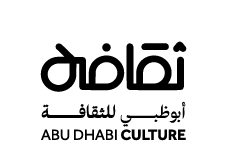Kami is one of the most popular traditional foods known since ancient times by Emirati families. It is extracted from goat or cow's milk and is eaten with dates. It has a delicious taste, especially if a little margarine is added to it. It is often eaten in the early morning, providing energy and vitality throughout the day.
Obtaining dairy products is subject to the considerations of taste. Not all milk can be a source of dairy products. Cow's milk is at the forefront of the quality types of milk from which butter, kami, ghee, milk are extracted as well as all other types known to Bedouin families. The types of milk obtained from cows vary, and thus so does the quantity extracted of each type. Therefore, some families insist on raising a specific type of cows as an important source of food for adults and children.
And the second source from which dairy products are extracted in the countryside and oases is sheep. Because the number of sheep is more abundant compared to the number of cows, the amount of dairy obtained from them is much more, However, sheep’s milk is not comparable to cow’s milk in terms of fat content, but despite that, sheep’s milk is the main source of dairy products. If one had the opportunity to visit the desert, they would notice the large number of sheep, as cows have limited places to gather in the desert, in which agriculture predominates and people lead a stable life, whereas sheep are more suited with the Bedouin lifestyle in moving from one place to the other in the desert.
Making jami from cow or sheep's milk goes through several stages. The first stage involves collecting the milk from in a saucepan in the morning, noon and evening, then adding a percentage of yogurt to it. It is then transferred to the saqy, which is a container made of goat skin. Many people still use it to this day, except that some have begun to use tin saqys. After putting it in the saqy, the woman performs the churning process for a long time, moving the milk back and forth until the fat is separated from the milk, and through this, kami butter is obtained. The produced quantities are collected throughout the week and are used by melting the butter to obtain a quantity of ghee which is used in food throughout the week. In the past, Bedouins would offer some of the butter for sale in the market to purchase clothes and other items for their children.
To obtain (yaqt), which is an important derivative of milk, the kami is dried under the heat of the sun throughout the day, and in the evening the material mixed with (bazaar), usually of (jiljilan) origin, is transformed to yaqt, which is a solid material that children find appetizing.1
Al Hadh Al Kuwaiti adds that the method of preparing kami is very simple, where cow’s milk is the source of kami. The woman puts milk in a pot (qadr) over a quiet (dawaa) fire and adds a little salt and leaves until it becomes curdled milk. The woman can determine when it’s done from the cracks that start to form on its surface. The woman places the remaining milk in the saqqa2 and left it attached to a rope, while stirring for long hours until the fat (ghee)3 is formed. Nowadays, the churning process is done by an electrical machine.
Al Yazia Al Mansouri adds: The method of preparing (jami) is very simple, but it requires accuracy and certain other criteria. Making “jami” first begins with milking the livestock, then fermenting the milk by placing it in a bowl and adding a little yogurt to it, then leaving it for four to six hours, until it becomes curdled milk. It is then placed in the saqqa, which is attached to a rope, and stirred in a calm manner. As a result, butter is formed and isolated to the top. A little cold water or ice is added to it to facilitate its extraction. This butter is the source of ghee.
After completing the extraction of butter, the actual stage of making (jami) begins by pouring milk into a bowl or saucepan, and putting it on a low heat for a period not exceeding twenty minutes, provided that the heat does not reach the boiling point so that its taste does not change, and it maintains its consistency. As time passes, the (jami) begins to float on the water, and after it is completely isolated, it takes the shape of a white brick. It is moved away from the fire and left for a long time until it settles and develops its original taste, thus make it easier to move to another container and adding ghee to it. It is then served with dates and sometimes bread.
The jami is preserved for long periods of time at average temperature. Due to the lack of refrigeration devices in the past, the only way by which they could preserve it for long periods of and keep it as a main source of sustenance during travel, was to dry it and turn it into dried (kami). The women would utilize the excess kami by placing it in a large bowl, sprinkling it with a little salt, then putting a transparent cover over it to protect against insects and dust. They would leave it under the sun for days, until it dried. After that, it could be carried and kept for long periods of up to a year. When they wished to consume it, they only needed to soak it in water for a period of at least 20 minutes, so that it acquired the natural texture of jami.
Aisha Al Shamsi adds that making kami differs slightly in our present time from the past, as now it is found in the form of ready-made yogurt available in all grocery stores and supermarket regardless of its types. The important thing is that it must be fresh. We place it in a pot, boil it in the same old way, then we take the layer that is formed on top and put it on a plate, adding ghee or olive oil to it and serving it with dates.4







